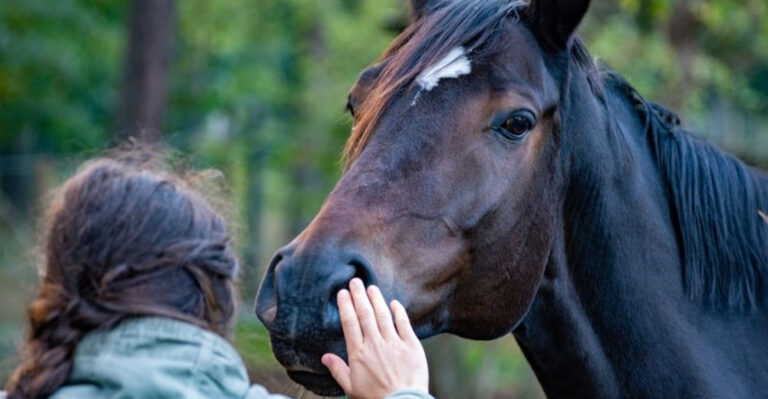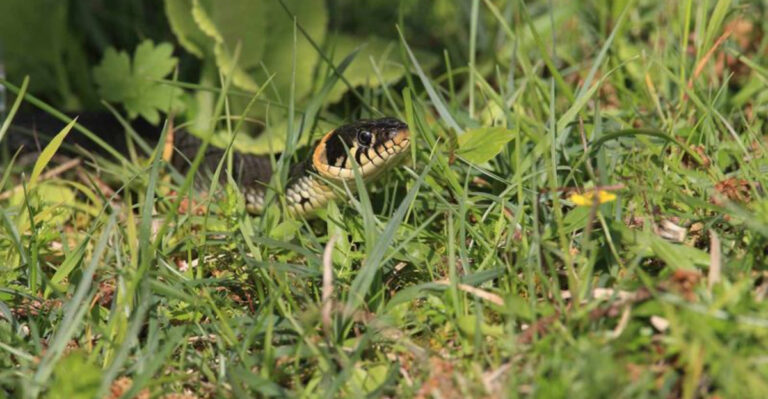Meet The Clouded Leopard: Nature’s Modern Saber-Tooth
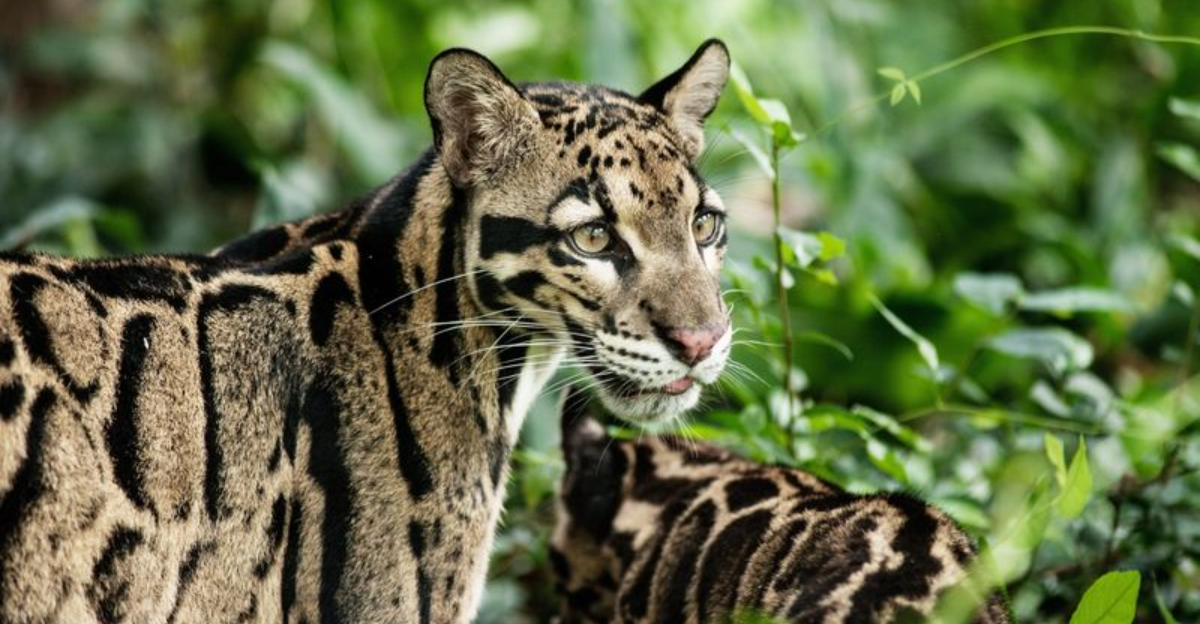
Hidden in the misty forests of Southeast Asia lurks a mysterious cat with teeth that would make ancient saber-tooths jealous. The clouded leopard, with its stunning cloud-like spots and remarkable climbing abilities, remains one of the least understood big cats on our planet.
Despite not roaring like tigers or lions, these medium-sized felines pack some surprising features that make them truly special in the wild cat family.
1. Super-Sized Fangs
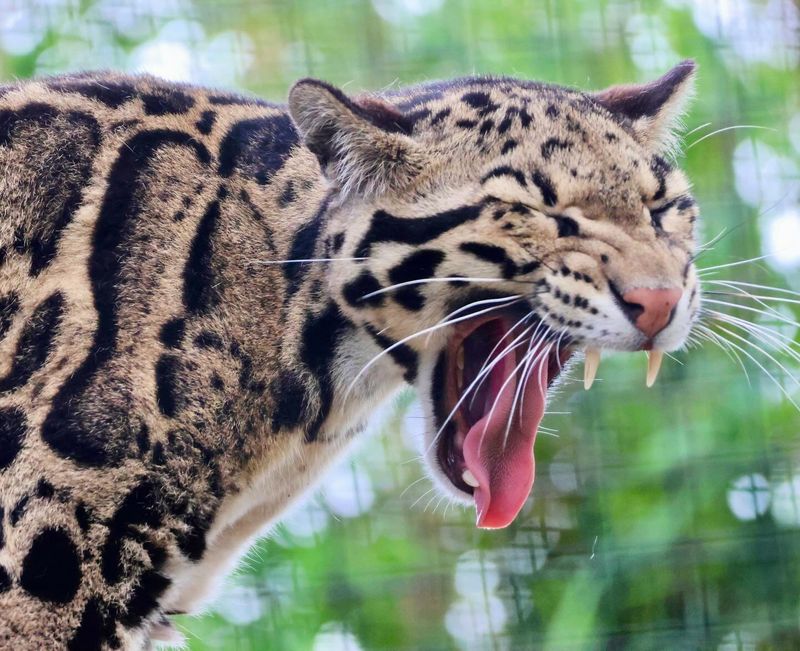
Imagine having teeth so long they almost touch your chin when your mouth is closed! Clouded leopards possess the longest canine teeth relative to skull size of any living cat.
These impressive daggers can grow up to 2 inches long – proportionally bigger than those of tigers or lions. Scientists believe these fangs evolved for delivering powerful killing bites to the neck of prey.
2. Masters Of The Trees
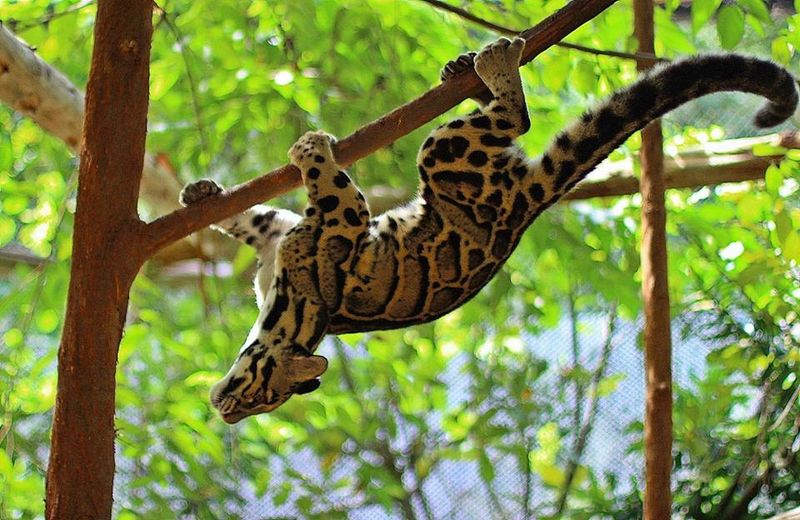
No other big cat moves through the canopy quite like these forest ninjas. Clouded leopards can hang upside-down beneath branches using their powerful tails for balance.
Their flexible ankle joints rotate 180 degrees, allowing them to descend trees headfirst like squirrels. Short, sturdy legs paired with broad paws make them unmatched aerial hunters in their dense forest homes.
3. Not-So-Big Big Cat
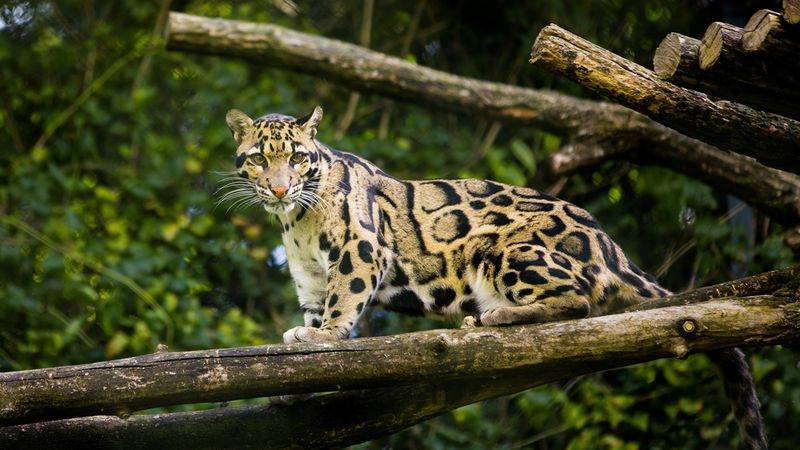
Despite their fearsome appearance, clouded leopards are surprisingly compact. These medium-sized cats typically weigh between 35-50 pounds – about the size of a border collie!
Males grow slightly larger than females, reaching lengths of around 3.5 feet (not including their impressive 2.5-foot tails). Their smaller size actually helps them navigate tree branches that would snap under larger predators.
4. Cloud-Like Camouflage
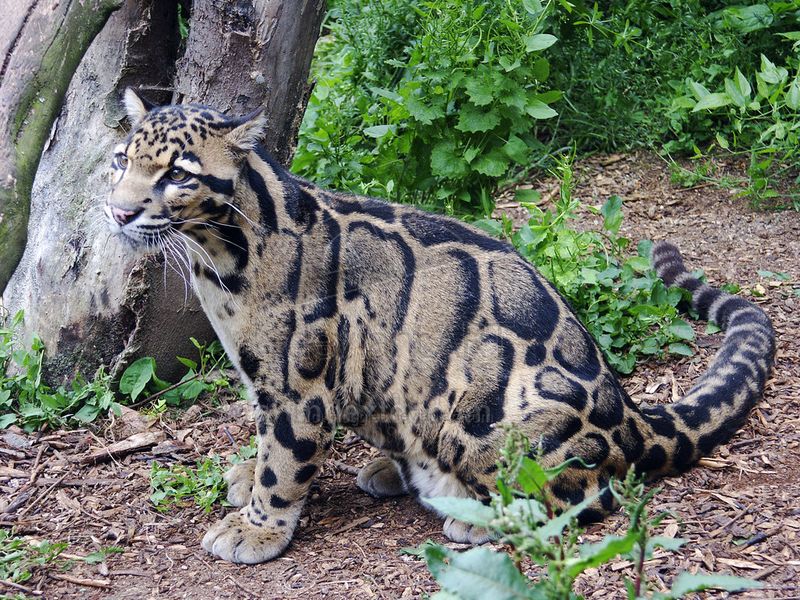
Those striking markings aren’t just for show! The clouded leopard’s distinctive coat features cloud-shaped patches with dark edges against a tawny-gray background.
This pattern creates perfect camouflage among dappled forest light and shadows. Each cat’s pattern is unique, like a fingerprint. The darker spots near their backs gradually transform into those signature cloudy blotches on their sides.
5. Secret Island Cousins
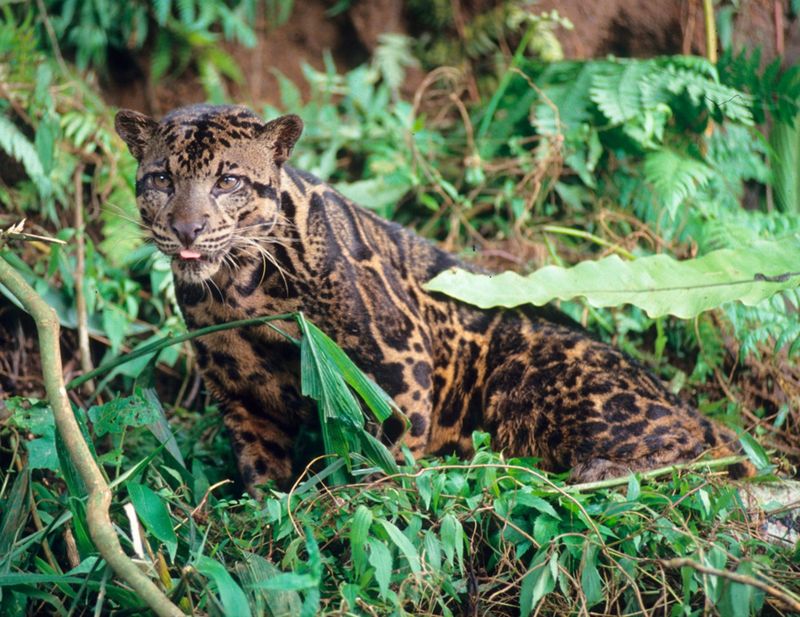
Talk about family drama! Scientists recently discovered that clouded leopards living on the islands of Borneo and Sumatra are actually an entirely different species from their mainland relatives.
Dubbed Neofelis diardi (compared to mainland’s Neofelis nebulosa), these island cats have darker coats with smaller cloud markings. This genetic split likely happened over a million years ago when rising sea levels isolated these populations.
6. Twilight Hunters
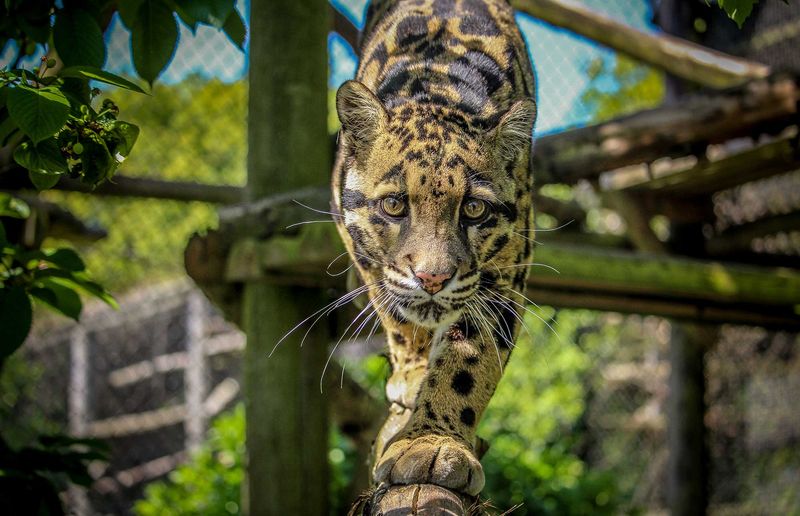
Clouded leopards prefer to hunt during the low light of dawn and dusk, capitalizing on their crepuscular nature. This strategic timing allows them to outmaneuver both daytime and nighttime predators.
Enhanced night vision comes from a reflective layer in their eyes known as tapetum lucidum. High up in trees, they rest during the brightest hours, conserving energy for their peak hunting periods.
7. Vanishing Act
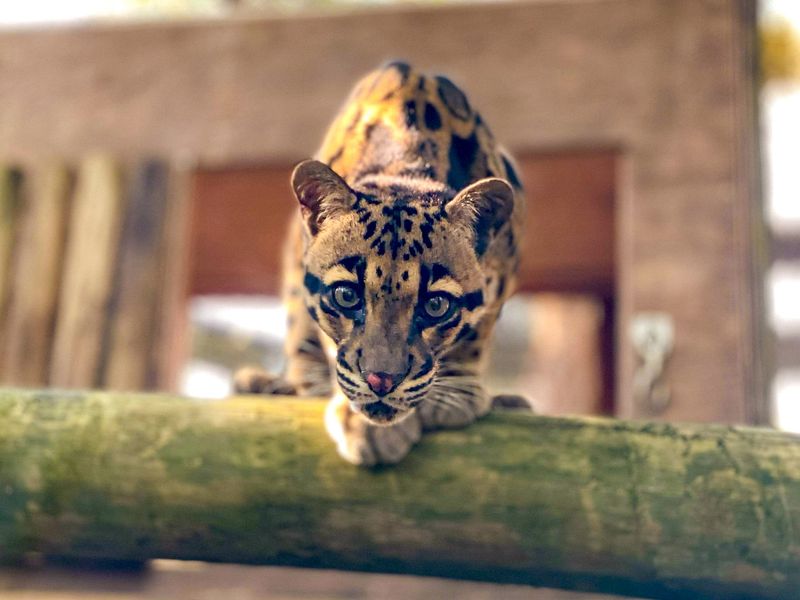
Ever wonder why we know so little about these beautiful cats? Clouded leopards are masters of disappearing acts. Researchers often call them “ghosts of the forest” because they’re incredibly difficult to study.
Camera traps frequently fail to capture them despite being in known habitats. Their secretive nature, excellent camouflage, and preference for dense forest canopies make them one of the least understood wild cats despite decades of research efforts.
8. Menu Variety
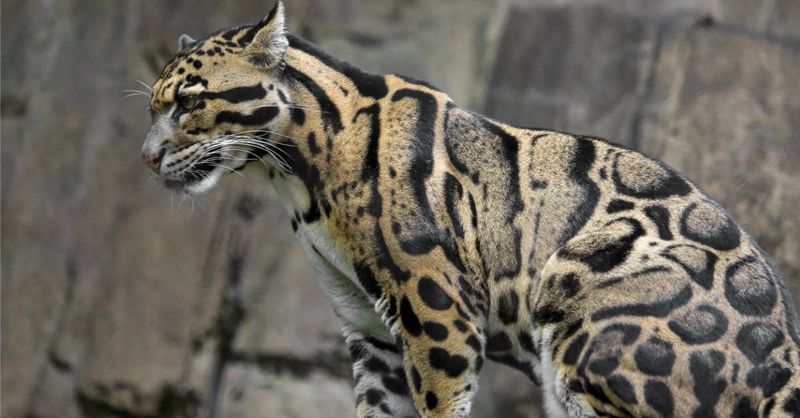
Dinner options for a clouded leopard are as diverse as the forest itself, ranging from small birds and rodents to larger prey like deer and wild pigs.
Adaptability in their diet ensures survival in various habitats. Powerful canines allow them to tackle larger animals, delivering swift, lethal bites. Agile climbers, they easily reach tree-dwelling prey, including sleeping monkeys and nimble squirrels.
9. Vocal Oddities
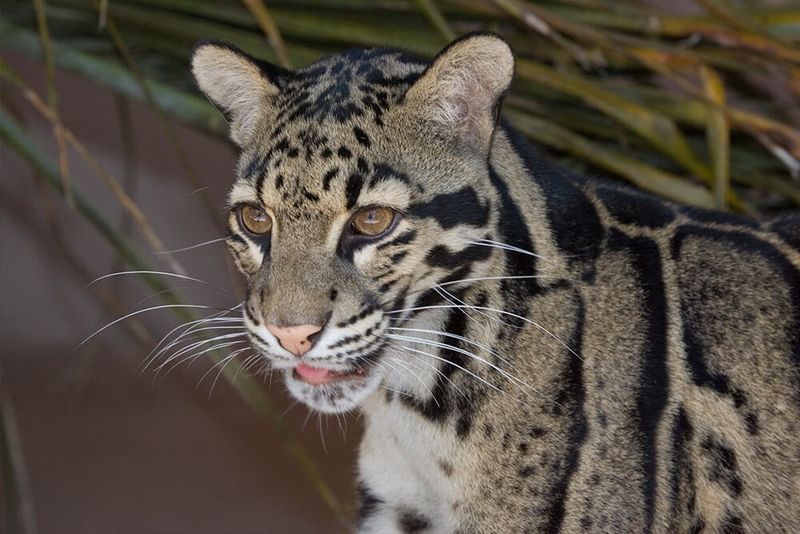
Unlike lions or tigers, clouded leopards can’t roar! Their throat anatomy lacks the specialized vocal fold structure needed for those impressive sounds.
Instead, they communicate through a fascinating range of calls including purrs, meows, growls, and hisses. They also make a distinctive “prusten” sound – a puffing noise through closed lips that’s used as a friendly greeting among these typically solitary cats.
10. Habitat Crisis
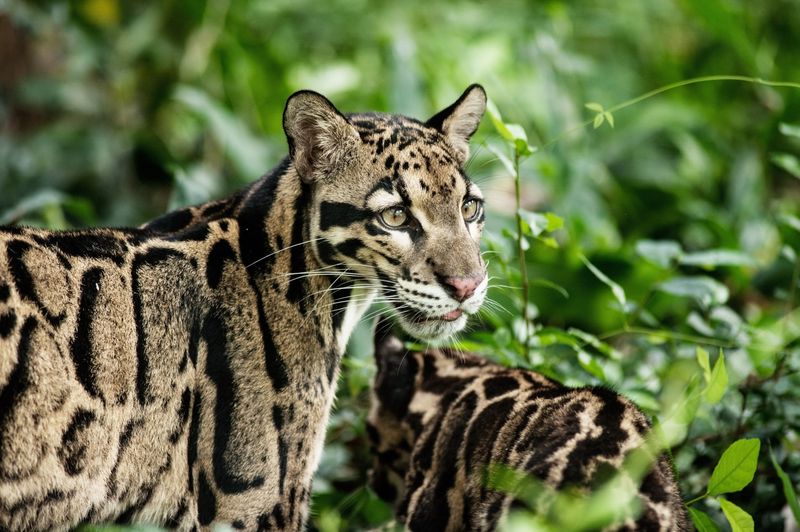
The forests these cats call home are disappearing at alarming rates. Southeast Asia has some of the world’s highest deforestation rates, with over 30% of clouded leopard habitat lost in recent decades.
Palm oil plantations, logging, and agriculture have fragmented their territory into isolated patches. When forced to cross open areas between forest fragments, these tree-specialists become vulnerable to poachers and other threats they’d normally avoid.
11. Ancient Origins
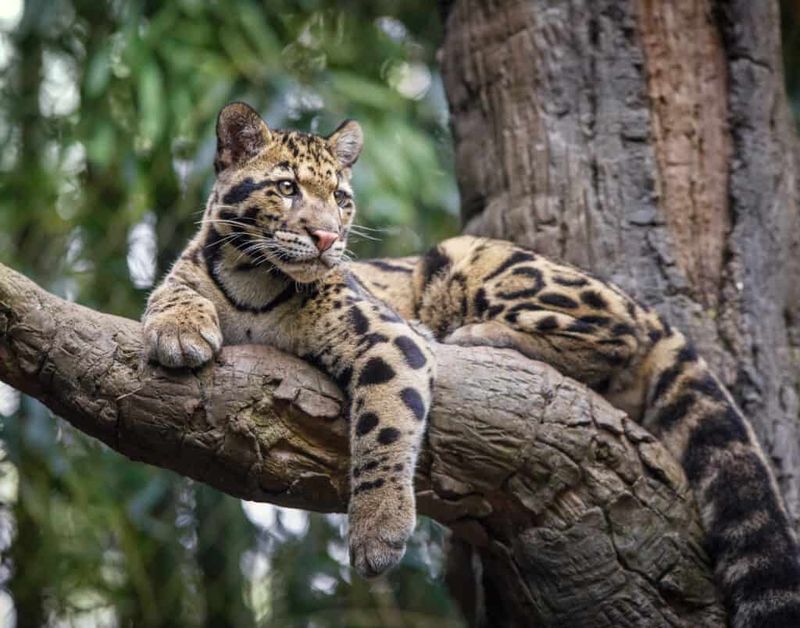
The clouded leopard isn’t just another cat – it’s a living fossil! Genetic studies reveal they branched off from other big cats around 6 million years ago, making their lineage incredibly ancient.
Their unique features have earned them classification in their own genus, Neofelis. Many scientists consider them an evolutionary link between big cats (lions, tigers) and small cats (ocelots, domestic cats), showing characteristics of both groups.
12. Tail Balancing Act
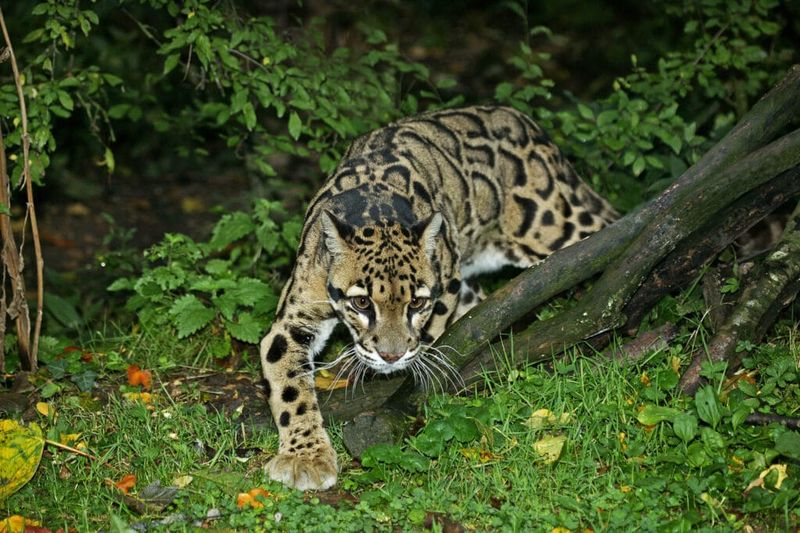
Those remarkably long tails aren’t just for show! Measuring nearly as long as their bodies, clouded leopard tails function as crucial balancing tools during precarious treetop movements.
When walking along narrow branches, they extend their tails perpendicular to their path like tightrope walkers. Some observers have even reported them using their tails to momentarily hang from branches while repositioning their paws during complicated climbing maneuvers.
13. Paw Adaptations
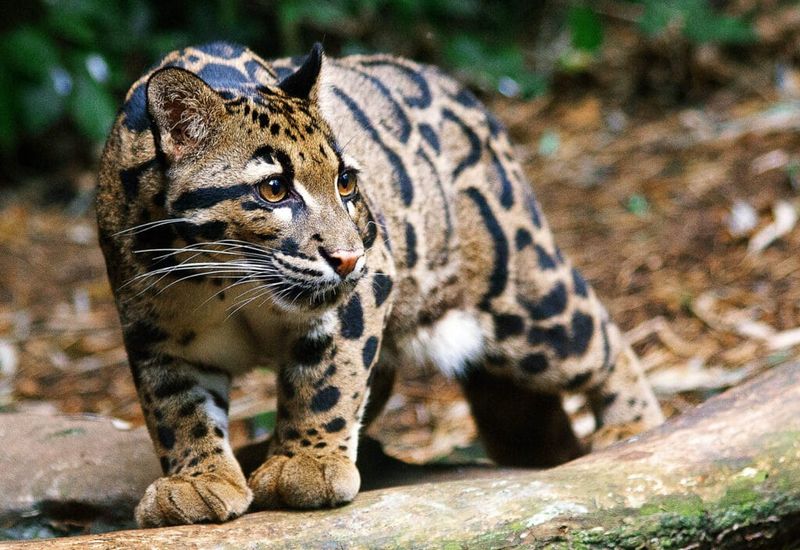
With oversized paws that perfectly suit climbing, clouded leopards boast the largest feet relative to body size of any cat. Balanced weight distribution allows them to move confidently along narrow branches.
Short, curved claws remain razor-sharp, retracting fully when not in use to maintain their cutting edges. Specialized cells in the paw pads enhance grip on wet or slippery surfaces, making them masters of rain-soaked tropical forests.
14. Solo Lifestyle
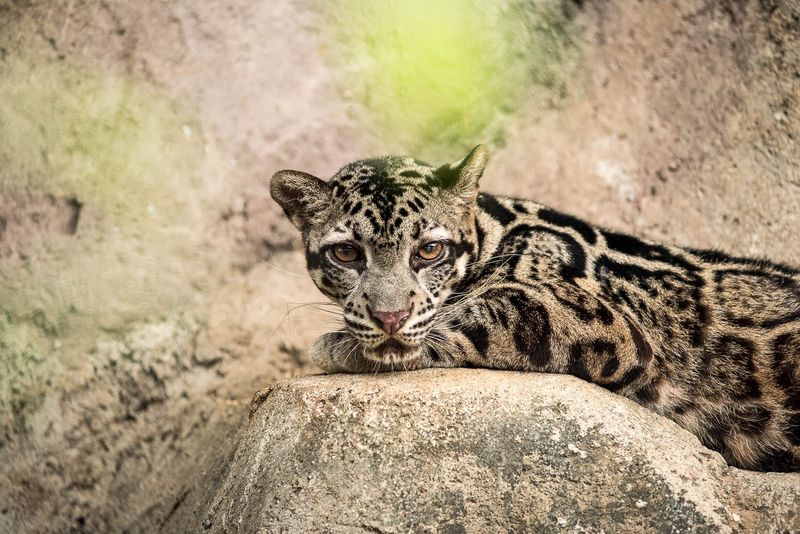
Loners by nature, clouded leopards maintain strictly solitary lives except during brief mating periods. Adults establish and fiercely defend territories spanning 25-50 square miles, marked with scent from special glands.
Males and females actively avoid each other most of the year, communicating primarily through scent markers and occasional vocalizations. This solitary lifestyle helps distribute these predators efficiently across limited forest resources while reducing competition.
15. Poaching Threats
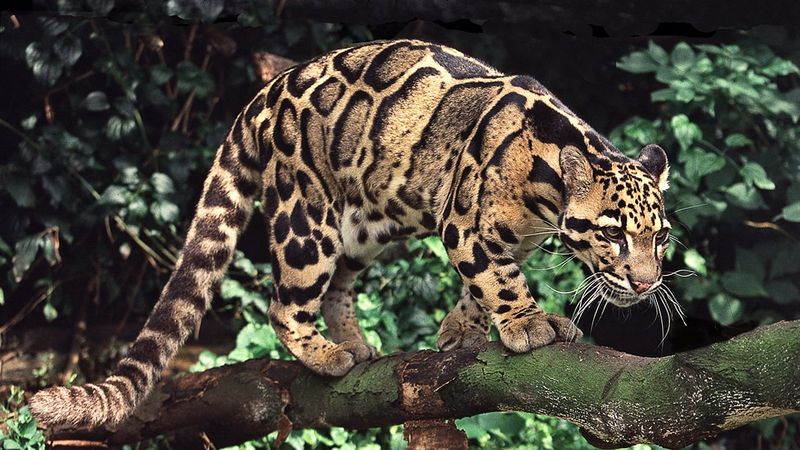
Beyond habitat loss, clouded leopards face relentless hunting pressure. Their stunning coats fetch high prices in illegal wildlife markets, while their bones are sought for traditional medicines.
Even their impressive teeth are sold as trophies or jewelry. Conservation groups estimate hundreds are killed annually despite protection laws. Their elusive nature makes accurate population counts difficult, but experts believe fewer than 10,000 mature individuals remain across their entire range.



